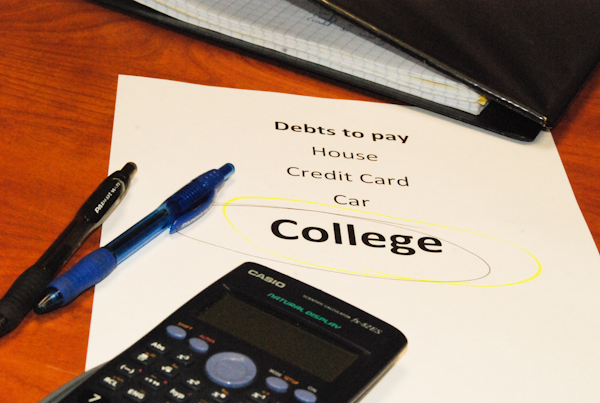Photo by: Henoc Kivuye
The Huffington Post recently cited government documents showing outstanding federal student debt has nearly doubled since 2007, reaching amounts close to $1 trillion. The data indicated the average borrower with federal student loans holds approximately $26,000 of debt.
President Barack Obama initiated the Income Based Repayment program to help alleviate student debt. The program was intended to allow students in the repayment phase of their federal loans to adjust their payments to fit their income.
The Huffington Post obtained documents that cited Sallie Mae is not enrolling nearly as many students into the Income Based Repayment Program as they should be. As the majority holder of the discontinued Federal Family Education Loan Program, Sallie Mae owns approximately 37-40 percent of the outstanding FFELP debt in the private sector. Only 15-18 percent of those individuals are enrolled in the IBR.
“The government has basically employed third-party entities such as Sallie Mae to service their federal loans,” Director of Financial Services Clint Larue said. “The Department of Education makes the loan, but they don’t collect it; they farm it out. Sallie Mae happens to be one of those companies that is responsible for servicing their loans.”
The papers obtained by Huffington Post also reported a mere 2 million borrowers were enrolled into IBR, while there were millions of borrowers eligible for the program.
“The government introduced the idea,” Larue said. “Instead of having a length of time in which a student would pay off a loan, the government restructured it to where the repayment schedule would be based on the student’s income, and the payments would change each year based on the income levels for that year. Payments could be as low as zero dollars if they are under a certain threshold of income for the year, then after 25 years, if they still have not paid off the loan, the remaining principle of the loan will be forgiven.”
Although Sallie Mae is slow to enroll students into the IBR, it is still the responsibility of the student to track their loans and contact the third-party servicer of their loan. It also varies whether the loan is a federal loan or a loan from a private provider.
“I really think there needs to be a better way of explaining loans to the students before they sign the dotted line so they understand what the loan entails,” financial representative and graduate of Oklahoma Christian University Jose Cruz said. “When you are a freshman in college, it is really easy to sign on the dotted line if you need the money and you feel as if you have no other options. After four years you walk away with $20,000 of debt and you realize you have to pay it back.”
Cruz suggested more students take initiative to learn about the loans they take out before they sign for them.
“I think students should see someone, because the school financial counselors are not against talking with students about every loan,” Cruz said. “The problem is if they took the time to explain it to every single student, they would never get through it.”
The financial counselors at Oklahoma Christian may not always be available after graduation, so the school is providing the SALT program. It is an online financial planner to help students track loans and plan a repayment schedule.
“We [Oklahoma Christian] have partnered with SALT for students to have a resource, because it does become complicated and this [financial aid] office is generally working with our current students and it is hard to really reach out to our former students to make sure that they are not going into default,” Larue said. “SALT is a financial-savvy program that students can use as a resource to plan out a budget for themselves. SALT has loan counselors that are free of charge to the students to contact them and the loan counselors can look up their loan history and see that your loan may be serviced by Sallie Mae and lets them get on the phone with you.”
Although there are programs available to track loans, many students are still asking for more information at the time of signing.
“I wish I had read more of the paperwork to understand what I was signing,” senior Jacob Cleverdon said. “I do think the documentation for the loans should be easier to find, so I could read the small print, but I didn’t think much of it my freshman, sophomore or junior year.”
Loans can be managed and paid off before graduation and many students have done just that.
“Fortunately I have been able to pay off my student loans,” Cruz said. “I made sure I saved enough money when I was in school to where as soon as I graduated, I paid it all off in the nine-month period after graduation, so I don’t have any student loans. Develop a habit of saving – that is the key. It is not going to get any cheaper and you are not going to win the lottery overnight. You really can only count on yourself, so develop the habit of saving.”
Looming student debt can be debilitating, but Larue, through a SALT phrase, gives students sound advice. “Don’t fear it. Face it.”













Be First to Comment